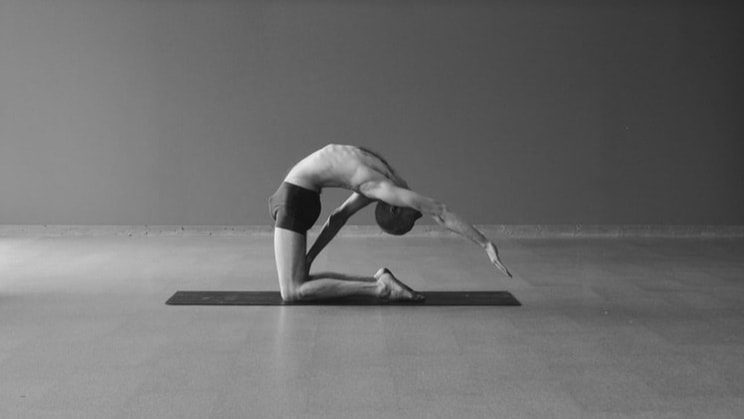|
Whenever we teach yoga, it is mostly done with words. We describe the actions, body movements, breathing, areas of concentration and purpose to our students. Sometimes there are moments of demonstration, discussion, contemplation and quiet practice, but for the most part yoga teaching is done by speaking. This makes our words important. What are we saying? And for what purpose?
OLD WORDS There is value in repeating the words of our teachers. It can root us in tradition, since our teachers often learned the same words from their teachers. It can also bring us closer to our own past experiences of practice, since we heard our teachers use the words while we were discovering. Now those same words can tether us to our own practice even as we guide others. Sometimes the words of our teachers are simply great, and try as we might, we can not invent a more effective way to describe a concept or action. In these cases, repeating our teachers is a wise choice. But there is also danger in repeating someone else's words, even when they come from a knowledgable, respectable source. The greatest risk is that we will instruct what we do not understand ourselves. When we already have instructions ready to disperse, there is little motivation to plumb the depths of practice and then teach from our own knowledge. We may end up teaching things far beyond our own ability and understanding, and this is bad for everyone--us, the students and the knowledge that we are claiming to perpetuate. Another danger is that speaking someone else's words can disconnect us from our own knowledge and experience. It is easy to switch to autopilot when we have the words ready beforehand. We can disconnect from our own practice as well as the needs of the students in front of us, simply repeating prepared statements that may or may not apply to the current moment. NEW WORDS Sometimes we invent our own instructions to guide our students. This has the advantage of being absolutely real and true; we aren't instructing what we've heard or read but what we've practiced and experienced. Almost always these words are clear, evocative and precise. When we speak with our own words, we are forced to connect our brains (and mouths) to our own knowledge, and this brings unity to both our teaching and practice. Disparate parts become unified. Also, this forces us to teach what we know. When we use our own words, there is no possible way to instruct something beyond our own understanding. The greatest danger to teaching in the moment with our own words is that we can lose humility and become caught up in our own story. We get intoxicated with the sound of our own voice, convinced that our experience is worth trumpeting, that our instructions are worth following. This perspective is ruinous to the yogi, as the ego can grow and drown out all yogic knowledge and humility. IN CONCLUSION There are pros and cons to repeating traditional words, old phrases and the words of our teachers. The same is true for inventing our own instructions directly from personal experience. Above all, we must be aware of what we say and why, and also what impact the words have on our students and us.
0 Comments
Leave a Reply. |
AUTHORSScott & Ida are Yoga Acharyas (Masters of Yoga). They are scholars as well as practitioners of yogic postures, breath control and meditation. They are the head teachers of Ghosh Yoga.
POPULAR- The 113 Postures of Ghosh Yoga
- Make the Hamstrings Strong, Not Long - Understanding Chair Posture - Lock the Knee History - It Doesn't Matter If Your Head Is On Your Knee - Bow Pose (Dhanurasana) - 5 Reasons To Backbend - Origins of Standing Bow - The Traditional Yoga In Bikram's Class - What About the Women?! - Through Bishnu's Eyes - Why Teaching Is Not a Personal Practice Categories
All
Archives
May 2024
|







 RSS Feed
RSS Feed